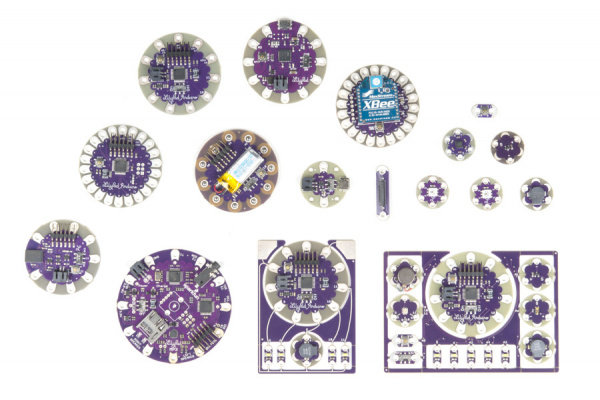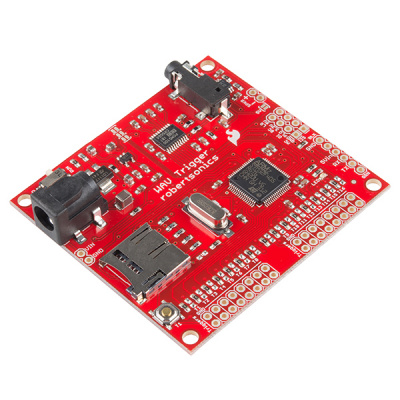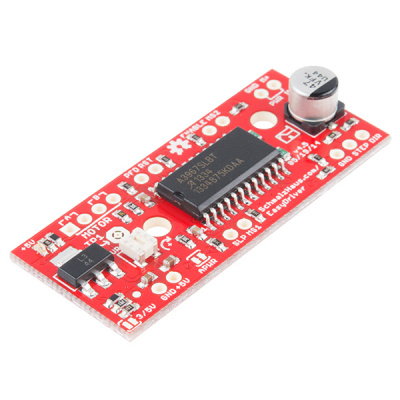How to Sell Your Widget on SparkFun
Choose Your Adventure
Have an awesome electronic widget that you want to get to market? Great! We are always listening to new ideas from our customers and the community. We get many inquires on this topic, so read this tutorial carefully to keep your product pitch from getting lost in the shuffle.
We're lucky, here at SparkFun, to have an amazingly creative and talented group of customers. Not only can they identify gaps in the catalogs of electronics suppliers, they can create a gizmo that fills that hole. But, going beyond a prototype or even a limited-quantity production run, often the hardest task in getting your world-alterring product out there is producing, marketing, and/or selling it to the masses. That's where we come into the picture. We recognize that there comes a certain benefit to having your product in our catalog and we want to give you the best chance to have that. However, the partnership needs to make sense for both parties (maybe more parties) involved.
We strive to keep the SparkFun catalog of products curated. A selection of products that help get your project completed that we would use ourselves. So regretfully we cannot take all products brought to us. Below we have outlined what we look for, how we can possibly work together, and the steps to take in order to properly submit your product for evaluation.
SparkFun aims to sell parts and boards pertinent to DIY electronics. This may touch on areas relating to education, prototyping, and product design. Among the reasons for stocking certain products, we look for things that are helpful, cutting edge, useful in a broad spectrum, and appealing the community. We want products that make things easy for the user, but at the same time, do not constrain the possible uses for the product.
Over the years SparkFun has helped to bring dozens of unique widgets and useful electronic shortcuts -- dreamt-up and designed by our customers -- to the throngs of electronics hobbyists, artists, and students. We've gone through this process enough to know how to guide any product through it. The goal of this tutorial is to walk you through two of the most common routes previous collaborators have followed in getting their widgets sold on SparkFun. Which route you choose mostly depends on who is manufacturing your product. Time to choose your adventure.
Option 1: You Manufacture, SparkFun Buys and Resells
Have you already set up a manufacturing process for your design? Whether you're cooking the boards in your basement reflow toaster, or working with an established assembly house, we might be interested in reselling it. What really matters is that you have a solid, tested design, a manufacturing process set up for it, and a market starving to buy it.
Hundreds of products in the SparkFun catalog go through this process, including:
- Makey Makey Classic -- Originally a collaboration with Jay Silver, Eric Rosenbaum, and SparkFun. The latest board version is now being redistributed with JoyLabz in our catalog.

- Raspberry Pi 3 -- A powerful SBC that SparkFun buys, stores in our warehouse, and resells.
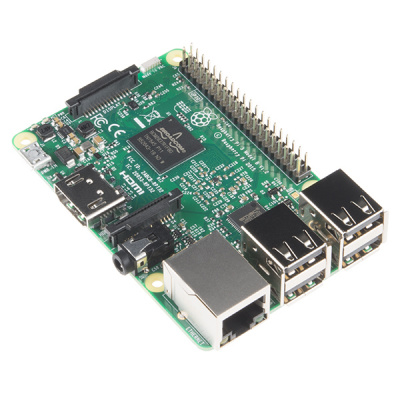
- BITalino - BioMedical Development Kit -- Another product that SparkFun buys and distributes via our online catalog.
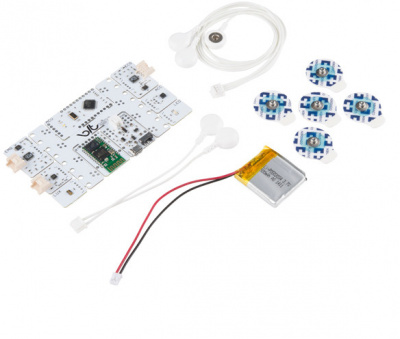
It's the fastest route to our storefront, if that's what interests you the most. Check out this half of the tutorial to find out more about how to pitch your product.
Option 2: SparkFun Manufactures, and Pays You a Royalty Per Sale
Have you prototyped your design, and proven that it works, but gotten stuck trying to produce and sell it? Well it just so happens that we have pick-and-place machines, reflow ovens, and a all-star production team that can help with manufacturing. Plus, our engineers can help polish the design along the way.
The best part about this option is you still get paid. Instead of buying the products up-front, we pay you a percentage-based royalty per product sold.
We do have limited production and design resources, so there's no guarantee that we can take your product on. But if it's unique enough, and fits within our manufacturing abilities, we're certainly interested in working with you to help productize your widget. Here are few examples include:
- LilyPad Ecosystem -- The LilyPad system was designed by Leah Buechley while pursuing her Ph.D. in computer science at the University of Colorado Boulder. The commercial version of the kit, which launched in 2007, was collaboratively designed by Leah and SparkFun Electronics.
- WAV Trigger -- The WAV Trigger is a unique high-fidelity polyphonic audio player with surprising capabilities. The board is a collaboration with Jamie Robertson. Another product we manufacture and pay royalties per sale for continued support and development.
- EasyDriver -- The EasyDriver is a simple to use stepper motor driver. The board was co-designed with Brian Schmalz. It is another product that we manufacture and pay royalties per sales for continued support and development.
These products have all gone through this process, and are now some of the highest-selling, most important products in our catalog. Check out this section of the tutorial to learn more about how to pitch your design.
So, it all begins by figuring out who's producing the widget. Read on to learn more about each option. At the end is a form you can use to submit your project/product/idea for review. Please read the entire tutorial before submitting as there is very pertinent information involved.
Option 1: You Manufacture, SparkFun Resells
This option is great for those who already have the resources to support manufacturing. In this relationship, SparkFun assumes the responsibilities of storefront management, inventory storage, shipping, and customer service. You, on the other hand, deal with manufacturing and assume all the risks inherent to that. This allows you to have more control over your product (revisions, pricing, documentation, etc).
A great example of this relationship in action is the pcDuino.
The pcDuino is designed and manufactured by our friends at LinkSprite. They support a community, publish the documentation, and handle all manufacturing, but aren't as interested in hosting a storefront. So we resell it! As a bonus, the end-customer can save on shipping (or get it for free) when resistors, batteries, switches, and other components are inevitably added to the order.
Division of Responsibilities
Here's an overview of who does what in this relationship:
SparkFun's Responsibilities
To help store, sell, ship, and market your product, we have a great group of talented employees canvassing a wide variety of skills. Here are the roles we'll take sole ownership of in the relationship:
- Purchasing Your Product -- To begin, our purchasers can work with you to work out prices, payment methods, and inbound shipping requirements. We'll need a decent distributor margin to give us room for our distributor and education pricing. We'll work out those details in an email.
- Storing Your Product -- Once we bring the product in, we've got a warehouse equipped to store it until it sells.

- Managing Storefront -- We'll post up a product page with all of the relevant descriptions and documentation-links to the product.
- Shipping Your Product -- Once the order comes in, we'll grab it from the inventory shelves and ship it away.
- Customer Service -- If there are any problems before or after an order, our customer service team can help sort it out.
- (First Level) Tech Support -- Our crack technical support team can field initial tech questions (via email, chat, or phone calls), but we may have to refer the tough ones to you.
Your Responsibilities
- Manufacturing -- In this relationship, you'll manage all of the part sourcing, manufacturing, and assembly responsibilities. That includes testing the product for complete functionality.
- Keeping Supply Up with Demand -- Some of the greatest products are sunk because they can't stay in stock. We want to keep your product in stock as much as possible, so we'll work with you ahead of time to understand the lead times of your product.
- Documentation -- Products that are well-supported, by datasheets, user's manuals, and tutorials, really stick out to us. This is a load we're willing to share (see below), but the most attractive products to us are those with the proper documentation to support them.
- Replacements -- No test procedure is perfect. Even the most battle-tested products may have a hidden flaw, and our customers will find it. If a defective product is discovered, we'll lean on you to help replace it. (But the first defense is tech support. See below.)
- Sticking Around -- Whether your product needs future firmware updates or customer support, we need to be able to stay in contact with you for the long term.
Shared Responsibilities
This is still a team effort. You've got a product that you love and want to see in the hands of as many users as possible. And we want to help get the word out and move some product! Here are some duties we might share in our quest:
- Marketing -- We both want to see your product sell. We'll pitch in on getting the word out, but we'll need your help too.
- Documentation/Tutorials -- Generally we're looking for products that are already well-supported through tutorials, datasheets, and user's guides. We're always excited about playing with new toys and documenting our experience, though -- so we can help out with tutorials here and there.
- Technical Support -- We can handle first level calls and emails. For the real brain-stumpers, we'll refer customer questions to you, the all-knowing-product-creator.
Crowdfunding? Crowdfunded?
Kickstarter and Indiegogo
Many products in our catalog were born out of a crowdfunding website, like Kickstarter or Indiegogo. We're happy to work with you, if your product is on this path, but there are a few caveats.
If you aim to approach us with a crowdfunded product, it's best to do so after it's been funded, or at least while it's on a trajectory to be funded. But, most important of all, we need to know ahead of time how far out your product is from shipping. Obviously this is a sticking point for a lot of crowdfunded projects.
If your product failed to meet its crowdfunding goal, we might be able to work together to still make it a reality. Check out the next page to see how we can collaborate to produce your widget.
GroupGets + SparkFun = GetSparked!
Have an existing product already that you plan to sell in SparkFun's catalog but it requires a high minimum order quantity? Try collaborating with GroupGets to get something cheaper in volume by working with others and selling to a group of buyers.
GroupGets is a type of crowdfunding platform for hardware developers to test their prototypes in the market. Developers launch a "campaign" on the GroupGets site, and instead of receiving financial donations like Kickstarter, supporters of the product place an order. When a certain amount of orders are placed, GroupGets helps that developer run a small batch of their product. They are a crucial step in the startup process for entrepreneurs in the hardware space because they facilitate a connection between those entrepreneurs, the customer, and small batch manufacturing.
If your product performed well on GroupGets in terms of sales and user feedback, they connect you with SparkFun for the next steps on how to get into our online catalog. For more information, check out the button below.
Option 2: SparkFun Manufactures, You Get a Royalty
This option is great for those looking to steer clear of the hassles of organizing manufacturing and generally running a business. We'll keep in contact with you about further revisions or changes to your design, but we deal with the manufacturing risks. We buy the parts and the PCBs to build your widget. We monitor demand and order stock to meet it. Doing this we can often significantly reduce the cost of the BOM (bill of materials), and produce a reliable, steady supply of your widget.
An example of this relationship is the WAV Trigger. The hardware and firmware was spearheaded by Jamie Robertson with one of our engineers guiding the design to help leverage the SparkFun manufacturing process.
We generally prefer Open Source Hardware designs for this relationship. Almost always those designs will be published under the creative commons license, so please take a look and decide if this is ideal for you. For more information check out some of these related posts:
Division of Responsibilities
Our load is much heavier in this relationship, but we still need some help from you. Here's an example of what we'll be doing, what we expect from you, and what duties we'll share in:
SparkFun's Responsibilities
- Part Sourcing, Manufacturing, and Testing -- We'll handle everything that goes into manufacturing and assembling your product. From ordering PCBs, resistors, IC's and other components, to stuffing the boards, and testing for complete functionality. These are company skills in which we place a lot of pride.

- Managing the Storefront, and Shipping Orders -- Just as any other product, your widget will get its own product page, and can be ordered via our online retail system.
- Paying You a Percentage Royalty Per Product Sold -- Before the product goes live, we'll find an agreeable percentage royalty to pay you per product sold. Then sit back as we send you quarterly checks.
- Customer Service and Technical Support -- Our customer service team will tackle all of the customer's order-specific questions. Our ace technical support crew will be trained up on your widget, and help answer any technical questions. Should it be necessary, we'll handle replacements or returns.
Your Responsibilities
- Initial Design (Prototype) -- Come to us with as much information and tested hardware as you can. Usually we like to see at least an initial round of prototyped PCBs. We can work together from there to bring your product fully into the fold.
- Keeping in Contact -- We expect your product to be around for a while, and as long as it's around we need you to be there too. For the product's lifetime, we'll need you to stay in contact for any questions or revisions that might come up.
Shared Responsibilities
- Designing for (SparkFun) Manufacturing -- More on this in the next section. We'll assign one of our talented engineers to help create a SparkFun manufacturing-friendly design based as closely-as-possible on your original design.
- Documentation -- At the bare minimum we'll want to release a hookup guide alongside your product. We can work together to help make this happen. We're happy to help publish and create more content as required.
- Getting the Word Out -- Our marketing team will help let the world know about your product. We hope you will too!
Collaborative Design Process
Since we'll be the ones manufacturing the board, there are certain design-for-manufacturability adjustments we usually like to make in order to keep costs down and production times minimal. These changes include:
- "Scrubbing" the Bill-of-Materials (BOM) -- We'll look for minor BOM adjustments that allow us to use parts we already have in production stock rather than sourcing a new component. For example, we may want to swap out your TC1185 voltage regulator with a nearly-compatible (already in house) MIC5205. Or (assuming it doesn't break anything) try to use a 2.2kΩ resistor instead of the 2.1kΩ you've spec'ed out.
- PCB Layout Adjustments -- We'll want to use part footprints from our EAGLE libraries, and we may want to tweak some component placements to give the pick-and-place machines some breathing room.
- Test Procedure Considerations -- Every one of our boards is tested for complete functionality, in one way or another. On some designs this means adding test points, on others it means working in some test code under the hood of your firmware.
To help implement these DFM adjustments, one of our talented engineers will be assigned to work with you on bringing it in house. No matter what, we'll work and communicate with you along the way to make sure our changes don't alter your vision of your product.
As a result of the "design scrub", this option takes longer than the previously mentioned route. We'll go through at least one prototype round of the design to iron out any production issues, and just make sure the thing works as intended. If you want to get a head start, and make things go a little more smoothly, try design your product to follow as many of our design rules as possible. Check out the next page for more details on that!
Designing for (SparkFun) Manufacture
The schematic and PCB designs are the heart of most SparkFun products. Over the last 10+ years, we've designed hundreds of unique PCBs, and produced millions of widgets, so we know what adjustments to the design will make our production process flow as smoothly as possible.
Those adjustments have found their way into a loose set of rules that we know to follow, but you might not. Designing your product with these rules in mind will give you a head start, and it'll also make your product pitch more attractive to us. The less work we have to put into scrubbing your design, the faster we can start building and shipping it!
- Design your PCB in EAGLE -- The collaborative process is easiest if we're both speaking the same EDA language. There are dozens of design tools out there, but we've gotten really accustomed to EAGLE. If you're not familiar with the software, consider checking out some of our tutorials for help getting started.
- Use our EAGLE libraries -- By using our set of EAGLE footprints and parts, you're better assured that the parts in your design will also be on our inventory shelves. You'll also be using the footprints that our quality-assurance team has painstakingly crafted to help optimize AOI and other testing.
- Unless your part is a kit, aim to use as many surface-mount (SMD) parts as possible. Our production team is most efficient, when they're letting the pick-and-place/reflow oven combo do most of the busy work.
- For common passives (resistors, capacitors, etc.), try to us 0603 parts or bigger (0805, 1206, ...).
- If a part has multiple footprints, and you're unsure of which one to use, consider checking the Eagle files of one of our live boards and comparing against that.
PCB Design Specifications
In as many designs as possible, we try to keep our board layouts within this set of specifications:
- Minimum Trace Width: 0.006" (6 mil)
- Minimum Trace Clearance: 0.008" (8 mil)
- Trace-To-Board Edge Clearance: 0.008" (8 mil)
- Minimum via Drill Diameter: 0.01" (10 mil)
- Default Board Width: 1.6mm
EAGLE Design Rules
Further to those minimum specifications, here are some more EAGLE-specific design rules:
- Board Frame
- Create the board frame on a 0.1" grid. Make the lower left corner start at (0, 0).
- Change the line width of the board frame to 0.008"
- Board frame will be square unless called for by special requirements of the design.
- Grid
- All parts are placed on a 0.005" grid. If possible, use a .05" grid.
- Make sure all 0.1" headers are lined up on a 0.1" grid. Keep it breadboard compatible!
- Packages
- Use 0603 packages for resistors and capacitors.
- Traces
- Use 10 mil (0.010") traces in general.
- 8 mil traces can be used when necessary, 6 mil is absolute minimum.
- Use thicker traces (as thick as possible) on power and charging traces.
- Keep at least 8 mil of space between traces.
- Route with straight lines and 45 degree corners only. No right angles in trace routing, but T-intersections are okay.
- Route from pads. Avoid routing into the pads- this causes traces to be not centered on a pad. Traces should enter and exit center of pad at 90 degree angle.
- Pours
- Use ground pours on the top and bottom layers.
- Change the "Isolate" setting on ground pours to 12 mil (0.012").
- Vias
- If something is soldered into a hole (header, connector, prototype vias, etc), use a via with a larger annular ring so that it is easier to solder. For normal prototyping vias, use 0.04" hole with a 0.074" diameter.
- Set the default via size to 0.020."
- 0.010" is the smallest allowed via size. Only change from the default if absolutely necessary.
- Via size is defined by the "Drill" parameter in the DRC.
- Misc
- Add a version code on the bottom copper layer, and revise the version code on every revision!
- Use the standardized I2C layout: GND, VCC, SDA, SCL.
- The autorouter can only be used on prototypes. Hand routing and touch-up of the autorouter is expected for production boards.
Make sure to load the Sparkfun.dru for the DRC check. Pull the most up-to-date version of the Sparkfun.dru from GitHub. Don't use the default settings!
PCB Aesthetics (Labeling)
When the bare PCB is your product, it doesn't hurt to dress it up and make the board look nice and polished. Here are some EAGLE-specific design rules that we follow to make our boards look as good as possible.
- Labels
- Label the name of the board appropriately.
- Label any LED with its purpose (power, status, D4, Lock, etc).
- Label all connectors (Vin, Port1, Batt, 5-9V, etc).
- Label pins where applicable (Tx, Rx, Power, +, Charger, etc).
- Label switches and switch states (On/Off, USB, etc).
- Label any extra information (ie. axes on gyros, accelerometers, etc).
- Makes sure labels are on a straight line- add a line in the tDocu layer to make sure the labels line up.
- Text should be 0.032" minimum and 15% ratio, vector font.
- Logos
- Every board should have the full SparkFun logo or at least the smaller SFE Flame. Add the
LOGO-SFEpart to the schematic. Make sure to put this part in the lower right hand corner of the schematic. - Every board should have the Open Source Hardware Logo unless otherwise specified. Look for
OSHW-LOGOin the library and add it to the schematic. This should go in the lower right hand corner as well.
- Every board should have the full SparkFun logo or at least the smaller SFE Flame. Add the
- Misc
- Components that are grouped together in the PCB layout will be grouped together in the schematic. Draw boxes to show functional groups.
Pitching Your Product
Pitching a product can be a daunting task. In order to make it easier for you, we have a guide for the information we need below. Please, when pitching your product be as informative as possible. The information we get from this email will be a strong indicator of whether it is something we would be interested in. Below is an explanation of the different questions to address in your email:
Contact Information: Pretty self explanatory. At the very least, include a name and email address.
Tell us about your product/project: A description of what you are pitching. A very descriptive rundown of what your product does and how it does it. Explain everything from a very basic viewpoint. Things to include (if applicable) are the major components used, scope, time, etc.
What stage of development is this project in: How far along are you on this? What work have you put in thus far? Again, we only consider pitches that have at least reached the point of a working prototype or proven design.
How does SparkFun factor into your project: What role will SparkFun play in this? How will we benefit the project?
What is your target MSRP: When considering the target retail for your product, consider things such as BOM cost, distribution margin, and profit margin. If you have a pricing structure already setup, please include that with all quantity price breaks present.
Describe the advantages of your product compared to its closest competitors: Tell us why your product is better than similar products on the market. If you feel it is unique to the market, what products come close? Please cite examples if possible.
Do you have a time frame in place for this product? If so, please outline it: We recognize the benefits of a strategic launch schedule. Please be realistic in your time frame and understand at no point will your project be the sole focus of SparkFun. This part especially highlights the idea that it must make sense for both parties involved.
What is your projected annual sales for this product: We understand, especially with our market, that this is tough to gauge. Please provide an estimate of how many units we can expect to sell. If you have any market research to back up your number, please cite that as well.
Describe the manufacturing process you envision for this (how are you going to get this product built?): We like to know who you are using for manufacturing and where they are located. This helps us estimate shipping costs and possible bottlenecks. What lead times can we expect?
If your product requires programming, what programming language does it use? What toolchain would you suggest programming it in: A bit of an overlap of the second question, but in this question go into depth about the software aspect of the project. Are any parts not open source? Does it use specific libraries?
Does this product require any agency approval (UL, CE, FCC, RoHS)? If so, how do you plan on addressing that: This is a tough one. Provide an informed answer if possible. Most information is regularly available online.
Any additional comments: This is a good place to include the URL to any web links you think are pertinent.
Considerations
If you are considering designing a product or working with SparkFun, check out some of these additional considerations:
Submission Email
Below is the email to send in your product pitch. Again, please include as much information as possible. Once submitted you will receive an automated email letting you know that we have received your submission. We wish we could provide a response and meaningful feedback for every submission, but it simply isn’t possible considering the volume we receive. If you don’t receive a response beyond the automated message within a month, please assume that we had to pass on your idea.

